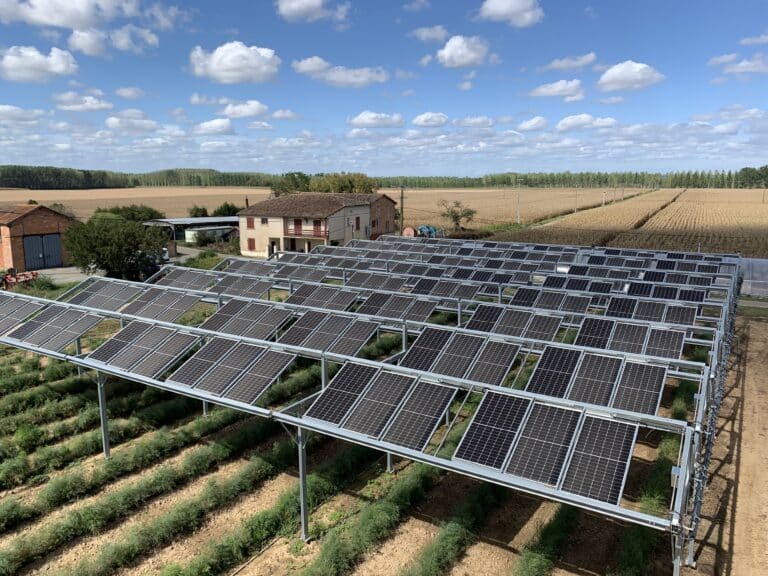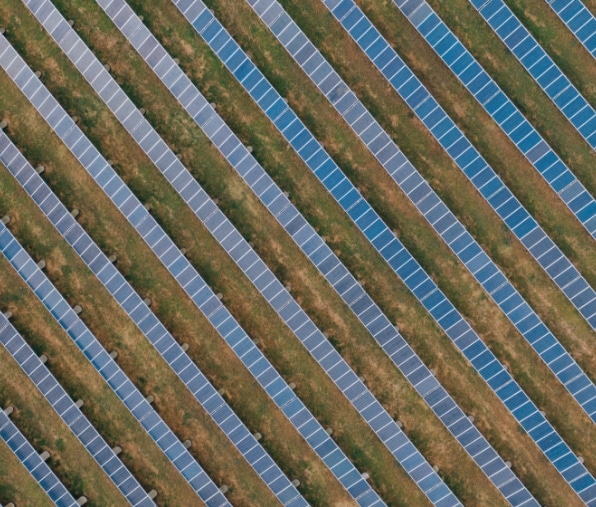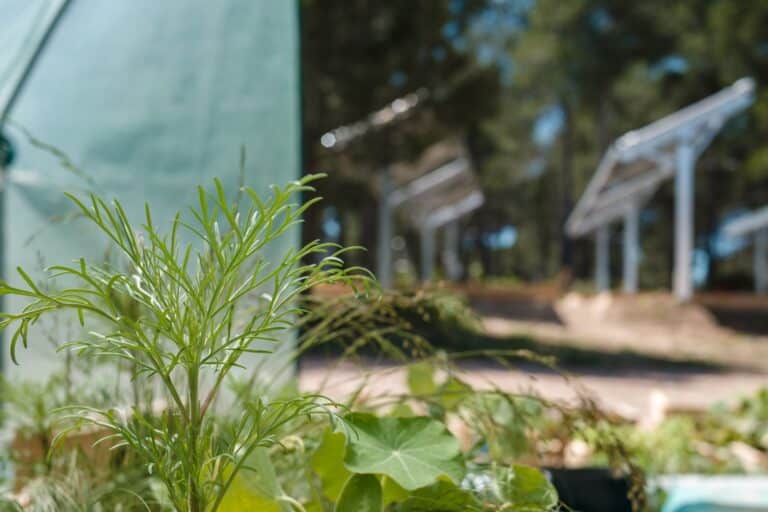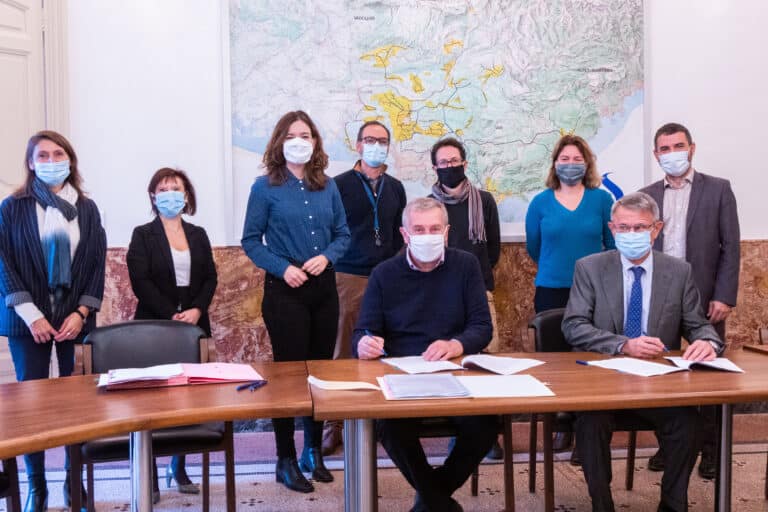Sujet de niche il y a quelques années, aujourd’hui, l’agrivoltaïsme se fait une place au sein du secteur des énergies renouvelables. La loi relative à l’accélération de la production d’énergies renouvelables (ou loi APER) du 10 mars 2023 est venue encadrer cette pratique. Dans cet article, nous décryptons pour vous les parties du décret d’application de la loi publié le 8 avril 2024, relatives au développement de l’agrivoltaïsme et aux conditions d’implantation d’installations agrivoltaïques.
Un peu de contexte
Agrivoltaïsme : de quoi parle-t-on ?
L’agrivoltaïsme est une activité permettant de répondre au double enjeu de souveraineté alimentaire et énergétique en alliant sur une même parcelle une production agricole significative et de l’électricité solaire. Apparu dans les années 1980 au Japon, puis importé en Europe et en France près de 40 ans plus tard, l’agrivoltaïsme fait aujourd’hui de plus en plus parler de lui.
“Art. L. 31436. – I. – Une installation agrivoltaïque est une installation de production d’électricité utilisant l’énergie radiative du soleil et dont les modules sont situés sur une parcelle agricole où ils contribuent durablement à l’installation, au maintien ou au développement d’une production agricole.”
Sur une parcelle agrivoltaïque les terres gardent leur vocation agricole. Les panneaux photovoltaïques sont implantés pour rendre des services aux cultures et aux animaux.

Pourquoi cette loi était tant attendue
L’agrivoltaïsme apparait, depuis ses débuts, comme une réelle opportunité pour favoriser les transitions agricole et énergétique par les bénéfices qu’il apporte. Son encadrement clair et précis était donc un enjeu, afin d’éviter dérives et projets alibis : la protection de l’activité agricole est et doit rester l’objectif premier de tout projet agrivoltaïque. Chez Ombrea, aux côtés de la FFPA, nous nous félicitons des garanties apportées par ce décret d’application.
Un projet agrivoltaïque de A à Z, par le prisme de la loi APER
Chez Ombrea, le constat est clair : beaucoup se joue lors de la préparation du projet (ou “préprojet”), notamment les phases d’origination pour le ciblage des parcelles et de développement. Il s’agit du socle, des bases qui définiront son succès. C’est donc très en amont, que nos équipes :
- Qualifient les bonnes parcelles : celles auxquelles nous allons pouvoir apporter un réel service
- Caractérisent et réalisent le design d’un projet agrivoltaïque adapté pour assurer le respect de l’activité agricole en place
Préprojet : Quels services apporte une parcelle agrivoltaïque ?
L’article 1 du décret n°2024-318 s’attèle à la définition des termes centraux, introduits par la définition de l’agrivoltaïsme inscrite dans la loi APER, dont celle d’une parcelle agricole, ou d’un agriculteur actif. Il rappelle également les quatre services dont au moins un doit être apporté par une installation agrivoltaïque – et qu’aucun service ne doit être dégradé, avec quelques tolérances précisées (dégradation substantielle pour un service, ou limitée pour deux services).

Chez Ombrea, afin d’évaluer les effets du projet agrivoltaïque sur la production agricole et les services apportés, nous nous appuyons sur nos outils numériques, développés en interne, qui permettent de simuler les variations d’indicateurs d’intérêt sur une parcelle équipée d’un système agrivoltaïque en comparaison avec une zone de référence.
Le cœur de l’outil permet de modéliser le microclimat généré par une structure agrivoltaïque en fonction de son design (orientation des panneaux, dimensionnement) et à partir de paramètres climatiques d’une année météorologique typique d’un point géographique choisi.
Ainsi, le simulateur permet notamment de modéliser :
- L’indice de stress thermique pour l’évaluation du confort thermique des animaux d’élevage,
- La variation spatio-temporelle de l’irradiance pour l’évaluation des conditions de croissance du végétal,
- La variation spatio-temporelle de l’évapotranspiration potentielle, également pour l’évaluation des conditions de croissance du végétal.
Préprojet : le respect des critères d’une parcelle agrivoltaïque
L’article donne ensuite une définition à des aspects inhérents de tout projet agrivoltaïque, qui manquaient jusqu’alors d’harmonisation :
- Tout d’abord, la zone témoin. Située à côté de la parcelle agrivoltaïque, elle doit permettre de comparer l’état de la culture sous et hors protection. Elle est essentielle pour établir une référence pour les calculs de la production agricole significative et des revenus durables. Concrètement, la zone témoin doit :
- Représenter une superficie d’au moins 5% de la surface agrivoltaïque installée dans une limite d’un hectare
- Être située à proximité de l’installation agrivoltaïque
- Ne comporter ni installation équipée de modules photovoltaïques ni installation ou arbre apportante de l’ombre
- Connaître les conditions pédoclimatiques (ou climatiques) équivalentes et être cultivée dans les mêmes conditions de la parcelle agrivoltaïque
Chez Ombrea, nous estimons que la mise en place d’une zone témoin élimine le risque de projet alibi, car le référentiel qu’elle permet est indiscutable. La zone témoin permet d’évaluer l’efficacité et la pertinence de l’installation agrivoltaïque et sera utile pour justifier de la conformité en phase d’exploitation.

- Ensuite, le taux de couverture. Il s’agit de la surface maximale projetée au sol des modules photovoltaïques sur la parcelle dans des conditions normales d’utilisation. Pour les projets de plus de 10 MWc, le taux de couverture ne doit pas dépasser les 40%.
Limiter un taux de couverture et donc d’ombrage trop élevé permet d’éviter certaines dérives, au même titre que la zone témoin. Les cultures ont besoin de lumière à de nombreuses phases cruciales de leur développement, une parcelle agrivoltaïque doit permettre cet apport en lumière. Il y aura cependant des exceptions à ce plafond de 40% dans une liste de technologies éprouvées, construite et basée sur les travaux d’analyse des sites existants portée par l’ADEME. Il est effectivement essentiel que ce taux de couverture soit directement lié aux contraintes agricoles et à la topologie d’une parcelle (machinisme, hauteur des cultures, pente, etc.). Il devra être adapté à la culture en place, pour assurer à chaque fois l’apport d’un service agronomique.
Enfin, l’article clarifie les conditions qui garantissent la protection de l’activité agricole en tant qu’activité principale de la parcelle, et les conditions selon lesquelles la mise en place d’une zone témoin n’est pas nécessaire.
- L’activité agricole reste l’activité principale si :
- La superficie non exploitable n’excède pas 10% de la surface couverte par le système agrivoltaïque
- La hauteur des panneaux et les dimensions des inter rangs intègrent correctement l’usage de l’exploitation (circulation et sécurité des animaux ou engins agricoles)
Un premier contrôle de la zone équipée et de la zone témoin sera effectué avant la mise en service, afin de s’assurer de la conformité de la parcelle.
Autorisations et exploitation : la mise en service et la vie d’un projet
Après cette phase du préprojet, arrive celle de l’obtention des autorisations. Le décret précise ainsi tout ce que doit obtenir la demande d’autorisation :

Arrive ensuite la phase d’exploitation, celle de la concrétisation et de la validation du travail préparatoire faite lors du préprojet. Sur la durée des 40 ans maximaux d’exploitation autorisée, un suivi annuel de la production agricole et énergétique sera réalisé par l’ADEME. Un contrôle des critères d’un projet agrivoltaïque sera également fait la 6e année après la mise en service et tous les 5, 3 ou 1 ans selon le taux de couverture et l’aspect éprouvé de la technologie.

Nos sites pilotes sont déjà suivis par des instituts techniques et scientifiques partenaires. Depuis 2016, nous éprouvons notre méthodologie afin de démontrer sa pertinence et les services que nous apportons à chacune des parcelles. Vous pouvez notamment retrouver les résultats observés sur 4 de nos sites (Le Channay et Valpuiseaux en grandes cultures, Apt en arboriculture et Rians en viticulture) sur notre site.
Démantèlement et réversibilité : la fin cruciale d’un projet
L’étape du démantèlement d’une installation agrivoltaïque fait partie à part entière de la vie d’un projet – c’est pour cela qu’il est également défini et encadré dans la loi. Cette étape doit être réalisée dans le respect de la parcelle, de la biodiversité et de la culture présentes dans un enjeu de préservation de l’activité agricole. Ce sont les engagements que nous avons pris chez Ombrea, lors du tout premier démantèlement expérimental de site agrivoltaïque mené sur notre parcelle de pivoines à Hyères (site mené en collaboration avec l’Astredhor Méditerranée).

La mise en conformité : où en sommes-nous ?
Grâce à la rigueur que nous nous sommes imposés depuis nos débuts, que ce soit dans le design de nos sites démonstrateurs ou encore leur suivi scientifique et agronomique (8 ans de retours R&D à ce jour), nous avons déjà pu intégrer l’ensemble des aspects abordés par la loi dans nos activités. La publication de ce décret nous permet désormais de formaliser et d’intégrer à nos process toutes les exigences qu’il mentionne.
Ainsi, pour chaque service apporté (amélioration du potentiel agronomique, adaptation au changement climatique, protection contre les aléas et amélioration du bien-être animal), nous avons défini une feuille de route afin de nous assurer que tous nos projets agrivoltaïques, en cours et futurs, y répondent :
- En étudiant la bibliographie et en faisant un état de l’art complet
- En consolidant et validant nos modèles de simulations afin de modéliser les synergies optimales entre protection agricole et production d’énergie, et donc les projets les plus pertinents possibles pour les agriculteurs et leur exploitation
- Et en remontant et analysant l’ensemble des retours d’expérience, permis grâce à nos sites démonstrateurs depuis 8 ans partout en France













